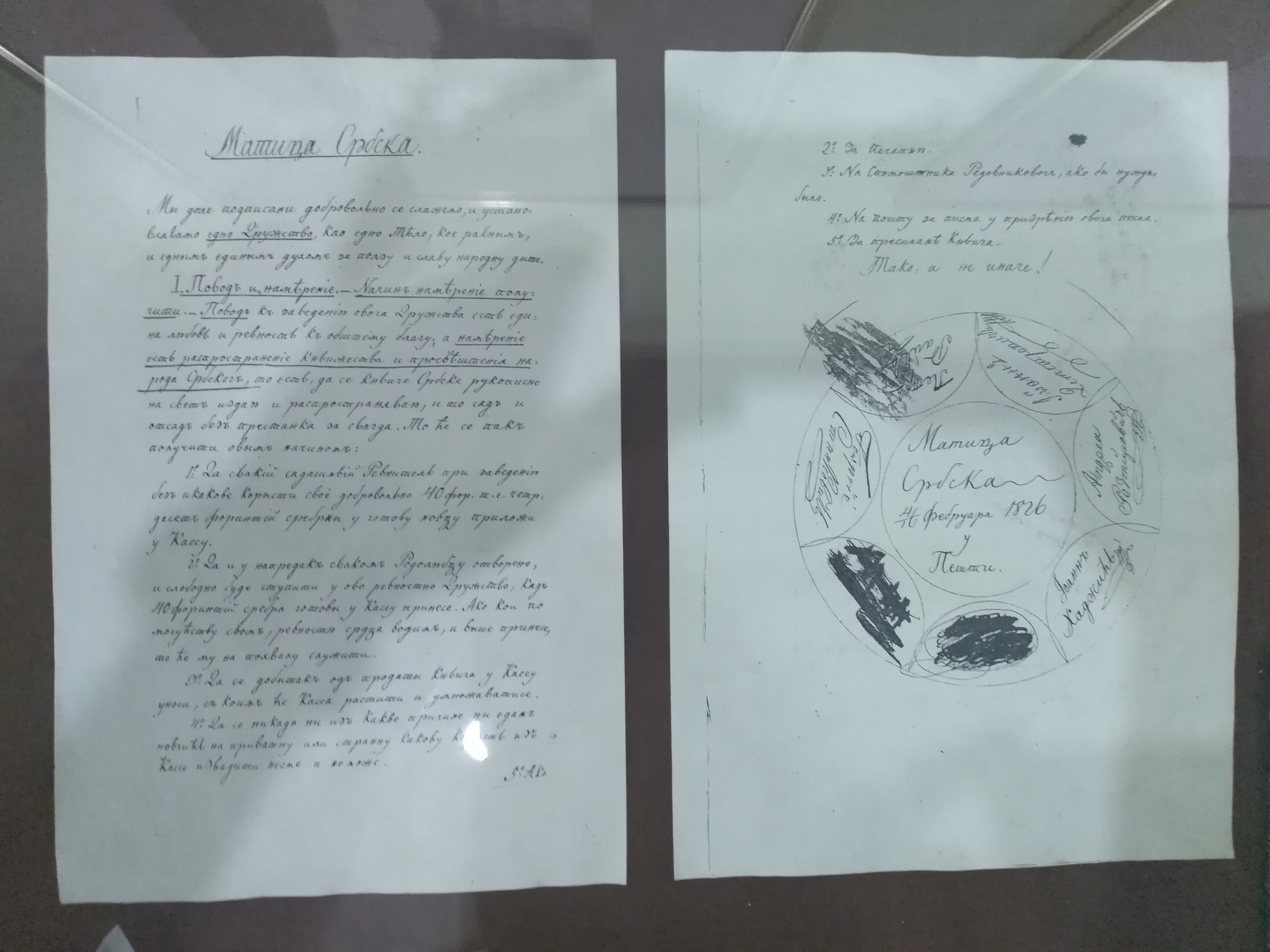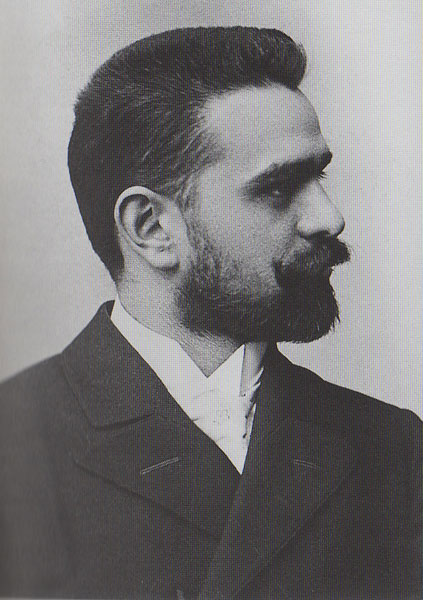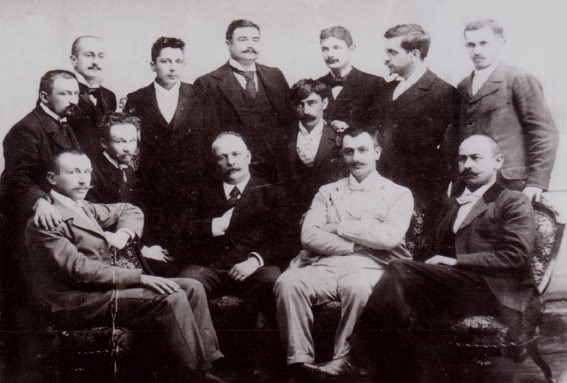|
Association Of Writers Of Serbia
The Association of Writers of Serbia ( Serbian: Удружење књижевника Србије, ''Udruženje književnika Srbije'') is Serbia's official writing association. Its current president is Milovan Vitezović. History The association was founded on 26 May 1905. Its founders and first members were Aleksandar Belić, Borivoje Popović, Dobrosav Ružić, Dragomir Janković, Dragoljub Pavlović, Dragutin Ilić, Živojin Dačić, Jovan Skerlić, Lujo Vojnović, Ljubomir Jovanović, Milan Milićević, Milovan Glišić, Milorad Mitrović, Milorad Pavlović-Krpa, Nikola Vulić, Pavle Popović, Petar Odavić, Radoje Domanović, Rista Odavić, Simo Matavulj (as president) and Stanoje Stanojević.Milovan Bogavac, Association of Serbian Writers 1905-1945, UKS history Post-WWII Association was re-established after the liberation of Belgrade on the meeting which took place on 31 December 1944. Notable signatories to the initiative included Isidora Sekulić, Ivo Andrić, ... [...More Info...] [...Related Items...] OR: [Wikipedia] [Google] [Baidu] |
Serbia
Serbia (, ; Serbian language, Serbian: , , ), officially the Republic of Serbia (Serbian language, Serbian: , , ), is a landlocked country in Southeast Europe, Southeastern and Central Europe, situated at the crossroads of the Pannonian Basin and the Balkans. It shares land borders with Hungary to the north, Romania to the northeast, Bulgaria to the southeast, North Macedonia to the south, Croatia and Bosnia and Herzegovina to the west, and Montenegro to the southwest, and claims a border with Albania through the Political status of Kosovo, disputed territory of Kosovo. Serbia without Kosovo has about 6.7 million inhabitants, about 8.4 million if Kosvo is included. Its capital Belgrade is also the List of cities in Serbia, largest city. Continuously inhabited since the Paleolithic Age, the territory of modern-day Serbia faced Slavs#Migrations, Slavic migrations in the 6th century, establishing several regional Principality of Serbia (early medieval), states in the early Mid ... [...More Info...] [...Related Items...] OR: [Wikipedia] [Google] [Baidu] |
Milorad Pavlović-Krpa
Milorad Pavlović — Krpa (Belgrade, 4 October 1865 — Belgrade, 29 January 1957) was a Serbian writer, publicist, translator, and editor and publisher of ''Glasnik za zabavu i nauku'' (Entertainment and Science Herald). While studying abroad, in the German Empire, his interest in the work of Anton Chekhov and Afanasy Fet led him to study the Russian language and try his hand in translating. He eventually translated several of Chekhov's short stories and novellas A novella is a narrative prose fiction whose length is shorter than most novels, but longer than most short stories. The English word ''novella'' derives from the Italian ''novella'' meaning a short story related to true (or apparently so) facts ..., entitled ''Čehovjevih Pripovedaka'' and ''Ruski ljudi'' (both published in 1890) and Fet's poetry. He also authored several books, including a memoir that appeared in 1963 in Belgrade's newspaper ''Politika'' entitled "A Witness to an Era." Works * ''Slika i karakteri ... [...More Info...] [...Related Items...] OR: [Wikipedia] [Google] [Baidu] |
Isidora Sekulić
Isidora Sekulić ( sr-cyr, Исидора Секулић, 16 February 1877 – 5 April 1958) was a Serbian writer, novelist, essayist, polyglot and art critic. She was "the first woman academic in the history of Serbia". Biography Sekulić was born in Mošorin, a village of Bács-Bodrog County, (now Serbia). Apart from her studies in literature, Sekulić was also well versed in natural sciences as well as philosophy. She graduated from the pedagogical school in Budapest in 1892, and obtained her doctorate in 1922 in Germany. Her travels included extended stays in England, France and Norway. Her travels from Oslo through Bergen to Finnmark resulted in ''Pisma iz Norveške / Letters from Norway'' meditative travelogue in 1914. Her collection of short stories, ''Saputnici,'' are unusually detailed and penetrating accomplishment in self-analysis and a brave stylistic experiment. She also spoke several classical as well as nine modern languages. Sekulić's lyrical, meditative, intr ... [...More Info...] [...Related Items...] OR: [Wikipedia] [Google] [Baidu] |
Socialist Republic Of Serbia
, life_span = 1944–1992 , status = Constituent state of Yugoslavia , p1 = Territory of the Military Commander in Serbia , flag_p1 = Flag of German Reich (1935–1945).svg , p2 = Kingdom of Hungary (1920–1946)Kingdom of Hungary , flag_p2 = Flag of Hungary (1920–1946).svg , p3 = Independent State of Croatia , flag_p3 = Flag of Independent State of Croatia.svg , p4 = Kingdom of Bulgaria , flag_p4 = Flag of Bulgaria.svg , s1 = Republic of Serbia (1992–2006)Republic of Serbia , flag_s1 = Flag of Serbia (1992-2004).svg , image_flag = Flag of the Socialist Republic of Serbia.svg , flag_type = Flag(1947–1992) , image_coat = Coat of arms of Serbia (1947–2004).svg , symbol_type = Emblem(1947–1992) , common_language ... [...More Info...] [...Related Items...] OR: [Wikipedia] [Google] [Baidu] |
Socialist Autonomous Province Of Vojvodina
The Socialist Autonomous Province of Vojvodina ( sh, / ) was one of two autonomous provinces within the Socialist Republic of Serbia, in the former Socialist Federal Republic of Yugoslavia. The province is the direct predecessor to the modern-day Serbian Autonomous Province of Vojvodina. The province was formally created in 1945 in the aftermath of the World War II in Yugoslavia, as the Autonomous Province of Vojvodina (). In 1968, it was granted a higher level of political autonomy, and the adjective ''Socialist'' was added to its official name. In 1990, after the constitutional reform influenced by what is known as the anti-bureaucratic revolution, its autonomy was reduced to the pre-1968 level, and the term ''Socialist'' was dropped from its name. It was encompassing regions of Srem, Banat and Bačka, with capital in Novi Sad. Throughout its existence Serbs in Vojvodina constituted the largest ethnic group in the province with a parallel strong affirmation of multi-ethni ... [...More Info...] [...Related Items...] OR: [Wikipedia] [Google] [Baidu] |
Novi Sad
Novi Sad ( sr-Cyrl, Нови Сад, ; hu, Újvidék, ; german: Neusatz; see below for other names) is the second largest city in Serbia and the capital of the autonomous province of Vojvodina. It is located in the southern portion of the Pannonian Plain on the border of the Bačka and Syrmia geographical regions. Lying on the banks of the Danube river, the city faces the northern slopes of Fruška Gora. , Novi Sad proper has a population of 231,798 while its urban area (including the adjacent settlements of Petrovaradin and Sremska Kamenica) comprises 277,522 inhabitants. The population of the administrative area of the city totals 341,625 people. Novi Sad was founded in 1694 when Serb merchants formed a colony across the Danube from the Petrovaradin Fortress, a strategic Habsburg military post. In subsequent centuries, it became an important trading, manufacturing and cultural centre, and has historically been dubbed ''the Serbian Athens''. The city was heavily devastated ... [...More Info...] [...Related Items...] OR: [Wikipedia] [Google] [Baidu] |
Matica Srpska
The Matica srpska ( sr-Cyrl, Матица српска, Matica srpska, la, Matrix Serbica, grc, Μάτιτσα Σρπσκα) is the oldest Serbian language independent, non-profit, non-governmental and cultural-scientific Serbian national institution. It was founded on June 1, 1826 in Pest (today a part of Budapest) by the Serbian habsburg legislator Jovan Hadžić and other prominent members of the Serbian Revolution and National Revival. The Matica was moved to Novi Sad in 1864. It is the oldest matica in the world. The main goals are to restore and promote Serbian national and cultural identity in the fields of art, science, spiritual creativity, economy and public life as well as to care for social development of Serbia. The literary and cultural society played a huge role in the flourishing of science and culture of the Serbs of Vojvodina, Serbia. The need for national homogenization, enlightenment, as well as the publication of Serbian books, were the main reasons for ... [...More Info...] [...Related Items...] OR: [Wikipedia] [Google] [Baidu] |
Stanoje Stanojević
Stanoje Stanojević ( sr-Cyrl, Станоје Станојевић; 1874 in Novi Sad – 1937 in Belgrade) was a Serbian historian, university professor, academic and a leader of many scientific and publishing enterprises. Career Stanojević finished university studies in Belgrade's Grandes écoles and post-graduate studies in philosophy in Vienna, where he received his PhD in 1896. He was a student of Konstantin Jireček, Vatroslav Jagić and Karl Krumbacher, and a follower of Ilarion Ruvarac and his school of historiography. Stanojević belongs to the first generation of Serbian historians educated abroad, at European universities. In 1903, he became a professor of the Grande école (University of Belgrade), his ''alma mater''. During Austro-Hungarian occupation of Serbia in World War I, Stanojević escaped to Sankt Petersburg, where he taught at the university as a visiting professor. From 1917, he lectured at Sorbonne and at the University of London. After the war, in 1919, ... [...More Info...] [...Related Items...] OR: [Wikipedia] [Google] [Baidu] |
Simo Matavulj
Simo Matavulj ( sr, Симо Матавуљ, 14 September 1852 – 20 February 1908) was a Serbian writer. He was a representative of lyric realism, especially in short prose. As a writer, he is best known for employing his skill in holding up to ridicule the peculiar foibles of the Dalmatian folk. He was an honorary member of the Matica srpska of Novi Sad, the first president of the Association of Writers of Serbia, president of the Society of Artists of Serbia and a member of the Serbian Royal Academy. Legacy Nobel prize winner Ivo Andrić called him "the master storyteller". Works *''Noć uoči Ivanje'', Zadar, 1873. *''Naši prosjaci'', Zadar, 1881. *''Iz Crne Gore i Primorja I'', Novi Sad, 1888. *''Iz Crne Gore i Primorja II'', Cetinje, 1889. *''Novo oružje'', Belgrade, 1890. *''Iz prіmorskog žіvota'', Zagreb, 1890. *''Sa Jadrana, Belgrade'', 1891. *''Iz beogradskog života,'' Belgrade, 1891. *''Bakonja fra-Brne'', Belgrade, 1892. *''Uskok'', Belgrade, 1893. *''Iz ... [...More Info...] [...Related Items...] OR: [Wikipedia] [Google] [Baidu] |
Rista Odavić
() is a multi-course meal in Kashmiri cuisine, originating from Kashmir. Almost all the dishes are meat-based using lamb or chicken with few vegetarian dishes. It is popular throughout the larger Kashmir region. Moreover, Wazwan is also served internationally at Kashmiri food festivals and reunions. History In the Kashmiri language, means 'cook' or 'cooking' and means 'shop'. The ultimate formal banquet in Kashmir is the royal . Of its thirty-six courses, between fifteen and thirty can be preparations of meat, cooked overnight under the supervision of a master chef called a . Guests are seated in groups of four and share the meal out of a large copper plate called the . A ritual washing of hands in a portable basin called the , which is taken around by attendants. Then the arrives, heaped with rice, quartered by two seekh kababs and contains four pieces of , (mutton intestines flavored with a spice mixture containing dried fenugreek (methi) leaves), two (twice-cooked lamb ... [...More Info...] [...Related Items...] OR: [Wikipedia] [Google] [Baidu] |
Radoje Domanović
Radoje Domanović (Serbian Cyrillic: Радоје Домановић; February 16, 1873 – August 17, 1908) was a Serbian writer and teacher, most famous for his satirical short stories. His adult years were a constant fight against tuberculosis. This circumstance of his life, and the affection which he inspired in all who knew him, created an aura of romanticism and sentimentality which stand in contrast to his literary accomplishments as a satirist and a powerful critic of the contemporary Serbian society. Biography Domanović was born in the village of Ovsište which is located in Topola municipality, Šumadija District. He attended a gymnasium in Kragujevac. Two of his teachers, Pera Đorđević and Sreten Stojković, who were followers of Svetozar Marković, were arrested for an attempt to take control of the local government and displaying a red flag. From 1890 to 1894, Domanović studied history and philology at Belgrade's Grande École. He read some of his first works ... [...More Info...] [...Related Items...] OR: [Wikipedia] [Google] [Baidu] |

.jpg)




